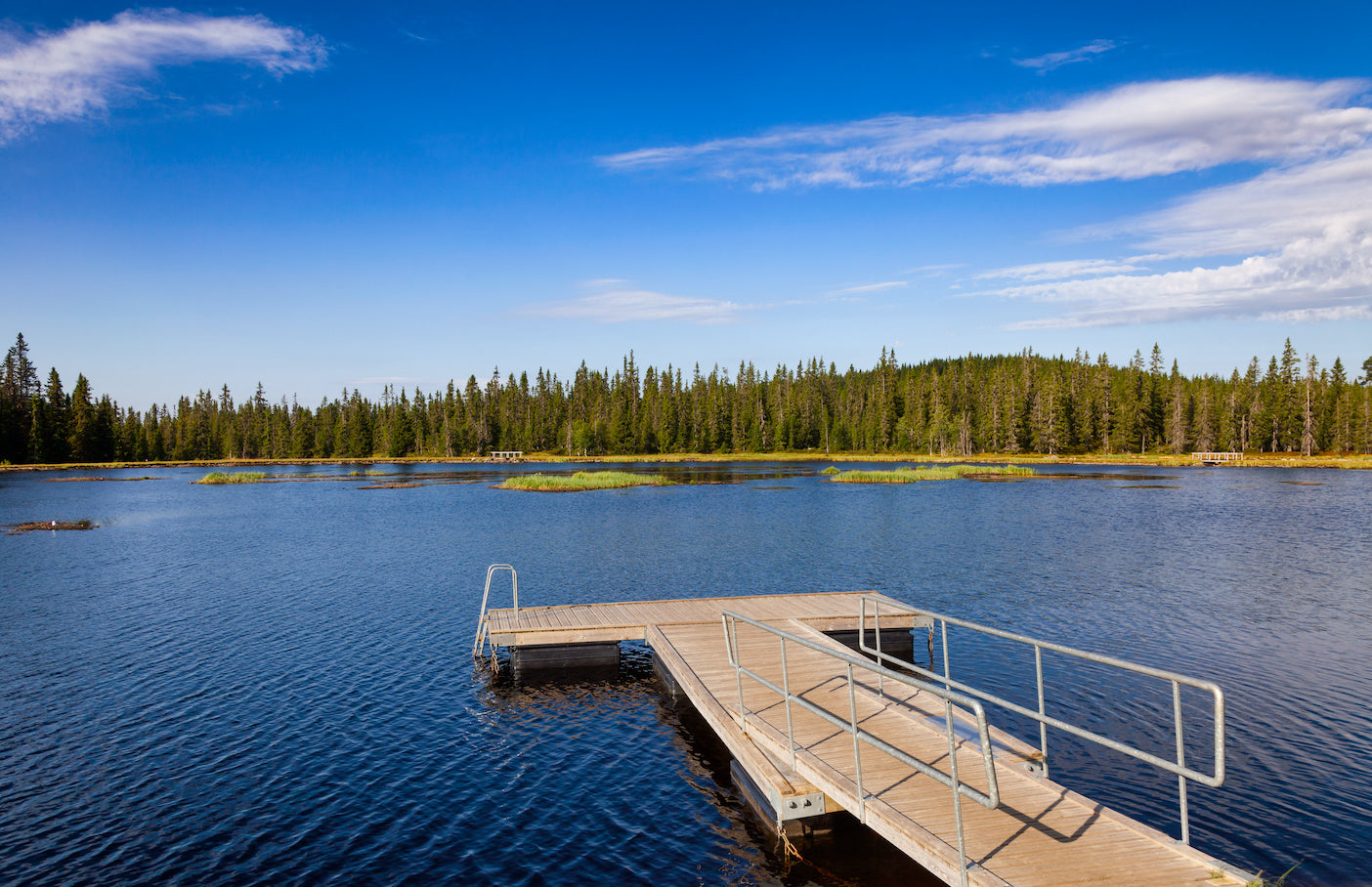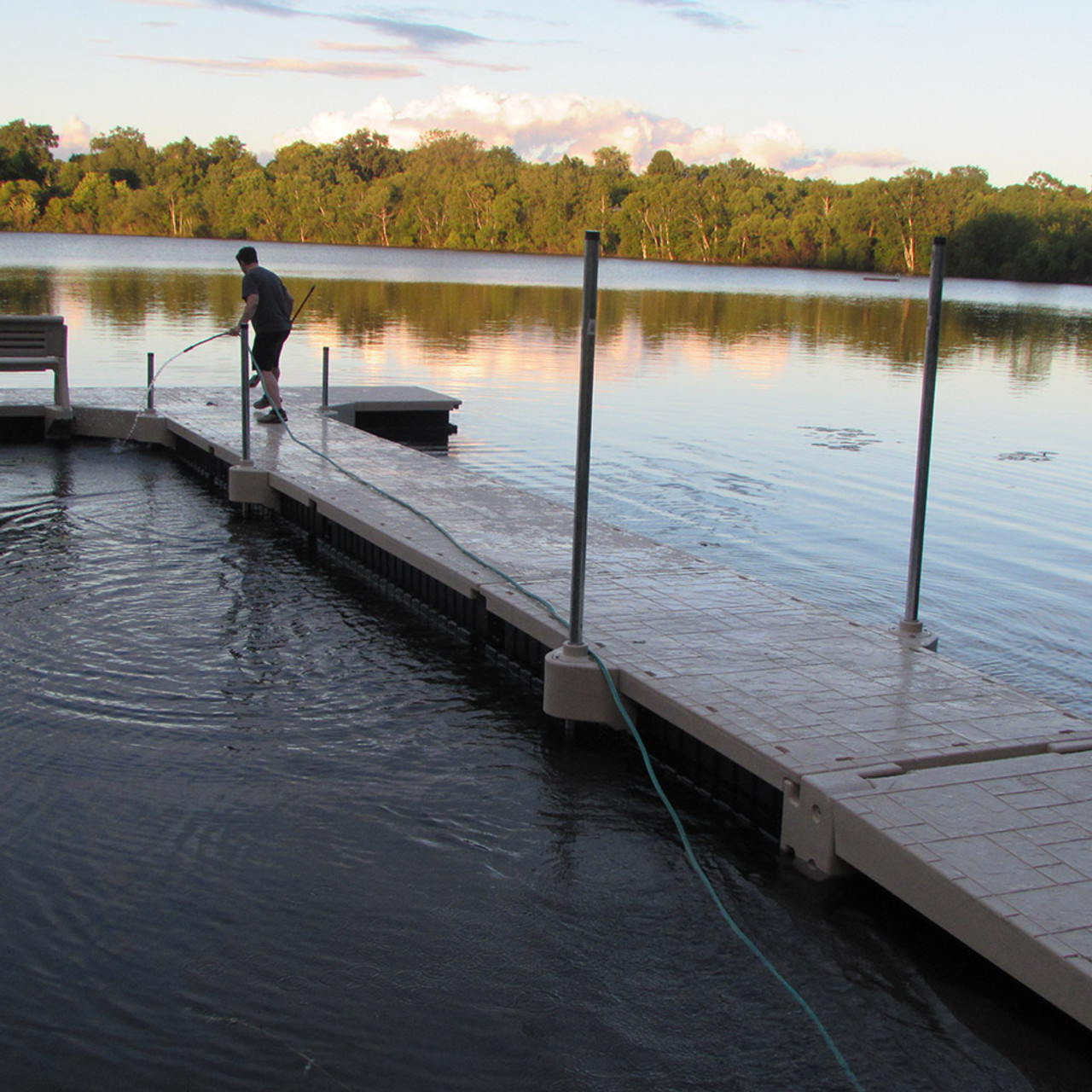Benefits of Working with a Developed Floating Dock Company for Comfort
Benefits of Working with a Developed Floating Dock Company for Comfort
Blog Article
Produce the Perfect Docking Service With Floating Docks
Floating docks present a versatile solution for a selection of maritime requirements, adapting perfectly to fluctuating water degrees and diverse vessel types. As we discover the necessary elements that contribute to the effectiveness of floating docks, numerous vital aspects concerning security and maintenance will certainly emerge, raising inquiries about how to maximize your docking experience.

Advantages of Floating Docks
Floating docks deal many benefits that make them a perfect option for different maritime applications. Unlike repaired docks, floating docks surge and autumn with the trend, making certain consistent ease of access for vessels.
In addition, floating docks are generally much easier and quicker to mount contrasted to conventional fixed frameworks. Their modular layout enables uncomplicated setting up and disassembly, facilitating maintenance and moving when needed. This flexibility is especially helpful for momentary applications or in environments where problems might transform.
Floating docks likewise have a tendency to be much more environmentally pleasant, as they minimize disturbance to the seabed and surrounding water ecosystems. Their resilient nature decreases the threat of damage to marine life, advertising a much healthier setting. These docks can be personalized to accommodate numerous vessel sizes, making certain that they satisfy details functional requirements.
Inevitably, the combination of versatility, ease of installment, and environmental considerations makes floating docks an extremely reliable solution for a large range of maritime needs.
Choosing the Right Materials
Selecting the appropriate materials for floating docks is crucial to guarantee long life, stability, and longevity. The choice of products directly affects the dock's performance in various ecological conditions, including exposure to water, sunlight, and prospective wear from marine web traffic.
Typical materials utilized for floating docks consist of light weight aluminum, timber, and high-density polyethylene (HDPE) Light weight aluminum is light-weight, corrosion-resistant, and calls for marginal upkeep, making it an excellent option for durability. Nevertheless, its initial cost can be greater compared to other materials.
Wood, while aesthetically appealing and providing a standard look, can be susceptible to rot and insect damage otherwise correctly dealt with. Using pressure-treated wood or normally long lasting species like cedar or redwood can mitigate these issues.
HDPE is a popular selection as a result of its resistance to UV rays and chemicals, in addition to being eco-friendly. dock company. It is lightweight and offered in various colors, enabling modification
Eventually, the best material selection will depend on particular needs, including spending plan, wanted aesthetics, and environmental factors to consider. Cautious assessment of these variables will result in a successful and durable floating dock option.
Design Factors To Consider for Stability
When developing floating docks, ensuring stability is an essential aspect that can substantially influence their capability and safety. Stability in floating dock layout is affected by numerous factors, including buoyancy, weight distribution, and the plan of elements.
Weight distribution is essential; evenly dispersing lots across the dock prevents turning and description improves security. Bigger layouts can use enhanced stability, particularly in rough water problems, while longer docks may call for added assistances to avoid sagging.
An additional vital factor to consider is the environmental influence, including wave activity and wind. Integrating features such as sidewalls or skirting can aid alleviate the impacts of environmental pressures, maintaining stability in damaging problems. Eventually, a mix of thoughtful style, material selection, and understanding of ecological elements will certainly yield a floating dock that meets both security and safety demands.
Installation Tips and Methods

Following, secure the needed licenses and stick to regional guidelines, which may determine installment approaches and ecological considerations. If required, involve a certified specialist experienced in floating this link dock installments. Use high-grade products created for marine atmospheres to enhance sturdiness and longevity.
When positioning the dock, straighten it alongside the shoreline to promote very easy accessibility. Ensure that the anchoring system is durable, utilizing concrete blocks or helical anchors to stabilize the dock versus wind and wave activity. It's essential to account for seasonal water degree changes, consisting of possible ice motion in cooler environments.
Throughout the installment, confirm the dock's floatation and stability before settling the anchoring. Consistently examine the installation for any signs of wear or damages. By adhering to these suggestions and techniques, you can accomplish a secure, useful, and cosmetically pleasing floating dock setup that fulfills your needs.
Maintenance and Treatment Guidelines
Maintaining and caring for floating docks is crucial to extending their life expectancy and making certain safe use. Normal assessments must be carried out to determine any indications of wear, damages, or marine growth. Try to find splits, loosened installations, or blemished locations on the dock's surface, as these concerns can jeopardize architectural stability.
Cleansing is vital. Use a stress washer to eliminate algae, barnacles, and particles, which can build up with time. For persistent growth, consider ecologically pleasant cleansing representatives that won't harm aquatic life.
Additionally, examine the mooring lines and anchors frequently to ensure they are protected and complimentary from corrosion. Replace any kind of torn or damaged lines without delay to preserve stability.
During severe climate, such as tornados or freezing problems, take precautionary procedures. Safeguard the dock with added mooring lines and, if practical, eliminate any kind of removable components to prevent damages.
Conclusion
In verdict, the implementation of floating docks presents a functional and reliable docking option appropriate for various maritime applications. Their adaptability to fluctuating water levels, combined with a modular design, allows for simple personalization and moving. Selecting appropriate materials improves both durability and aesthetic charm, find out this here while careful consideration of stability makes sure security and longevity. With appropriate installment and regular upkeep, floating docks can supply reliable and efficient docking experiences for a vast array of vessels.
As we discover the essential aspects that add to the efficiency of floating docks, several vital aspects pertaining to security and maintenance will arise, elevating questions about how to enhance your docking experience. Unlike repaired docks, floating docks increase and loss with the trend, making sure consistent ease of access for vessels.When designing floating docks, guaranteeing security is a fundamental facet that can substantially impact their functionality and safety and security. Stability in floating dock design is affected by numerous factors, including buoyancy, weight distribution, and the plan of components. Ultimately, a combination of thoughtful design, product choice, and understanding of environmental factors will yield a floating dock that fulfills both stability and safety and security demands.
Report this page